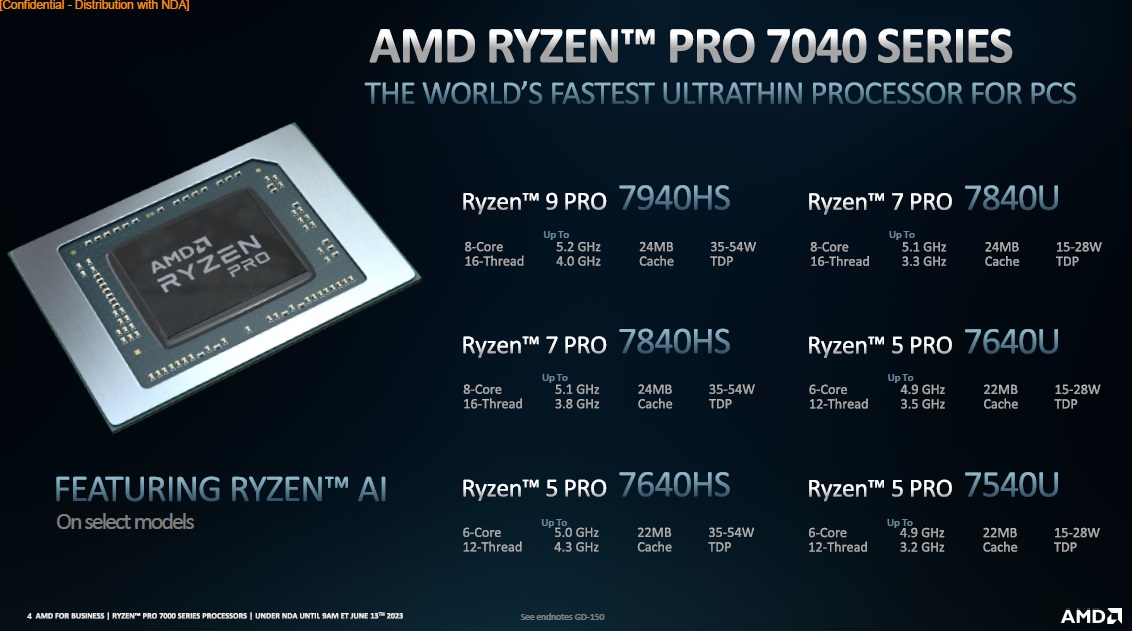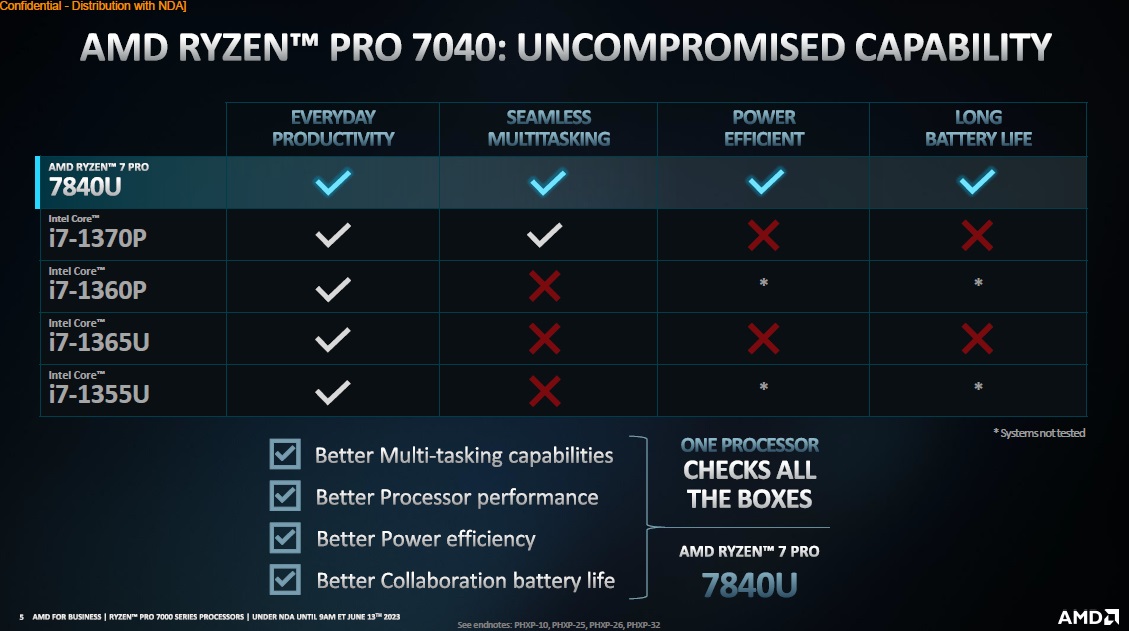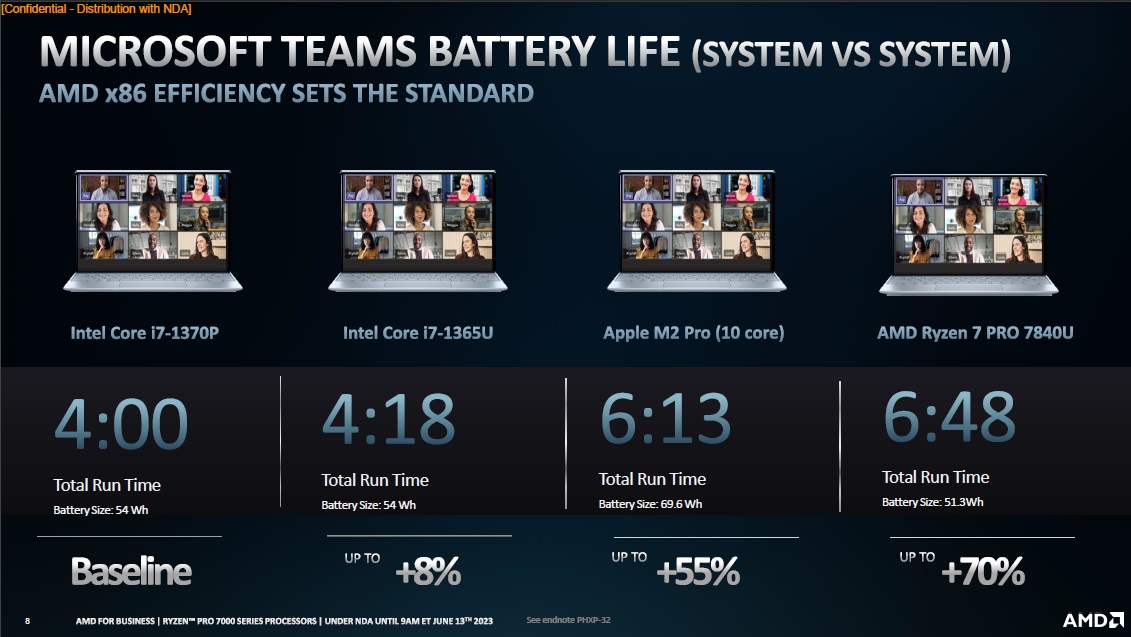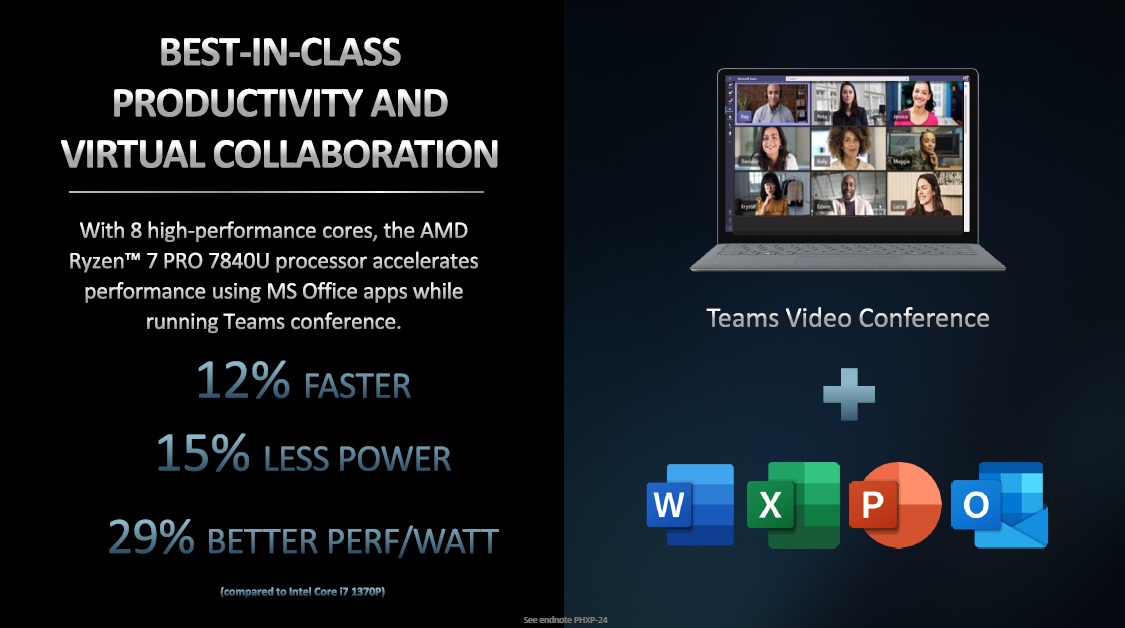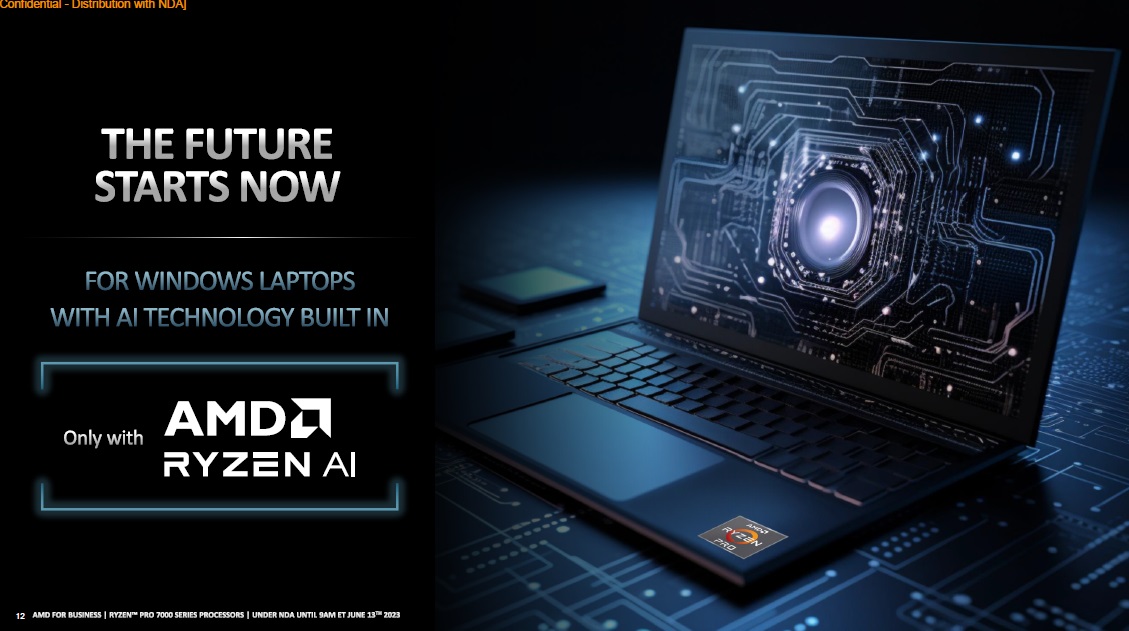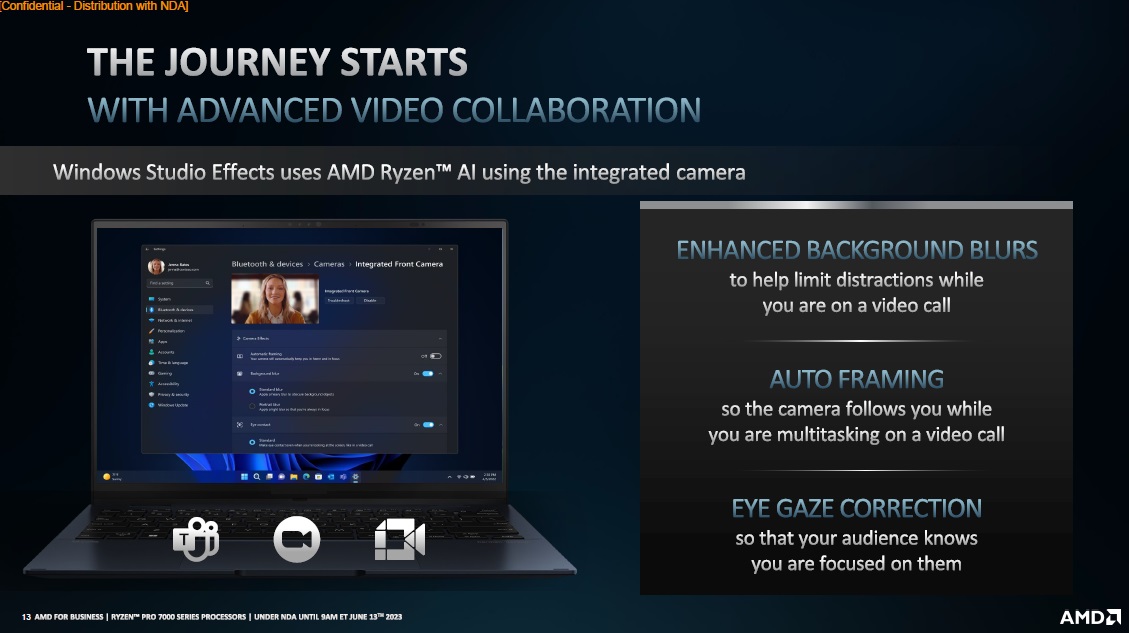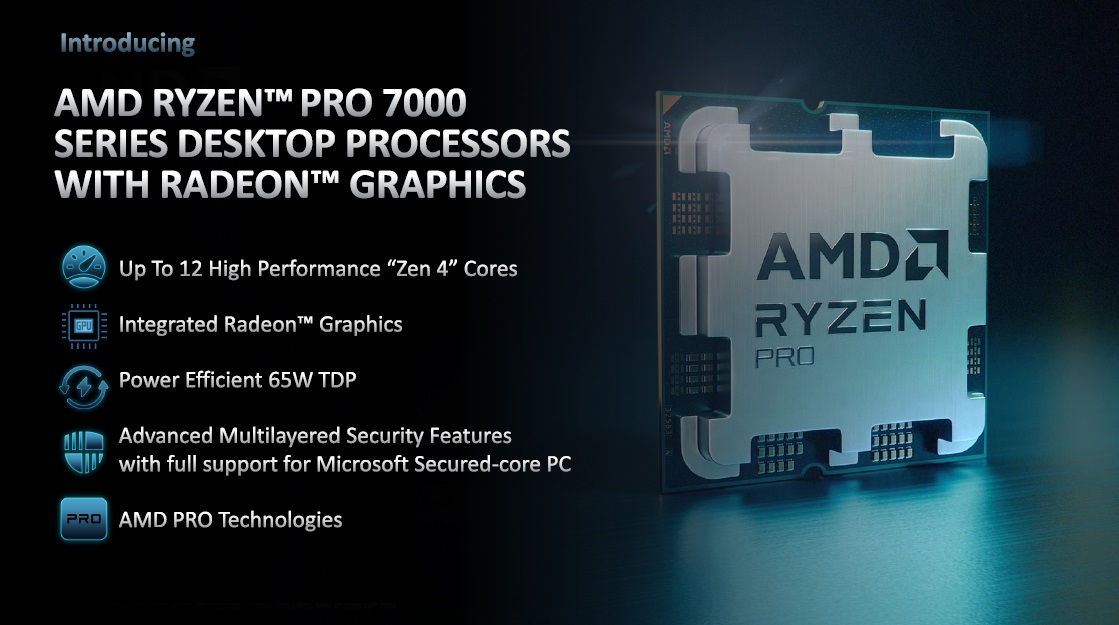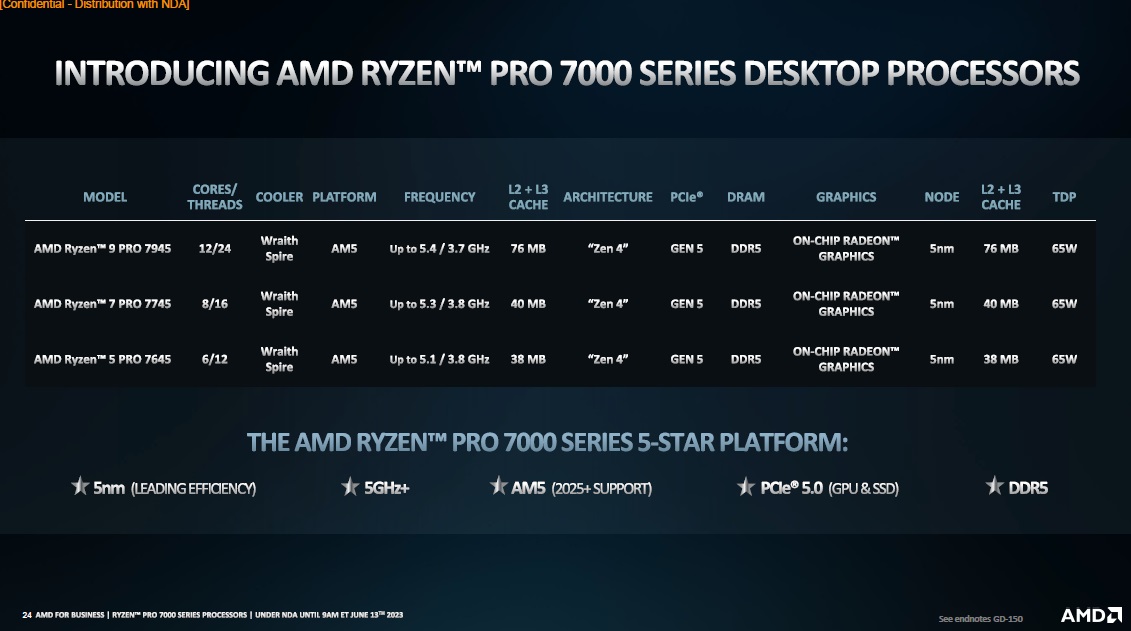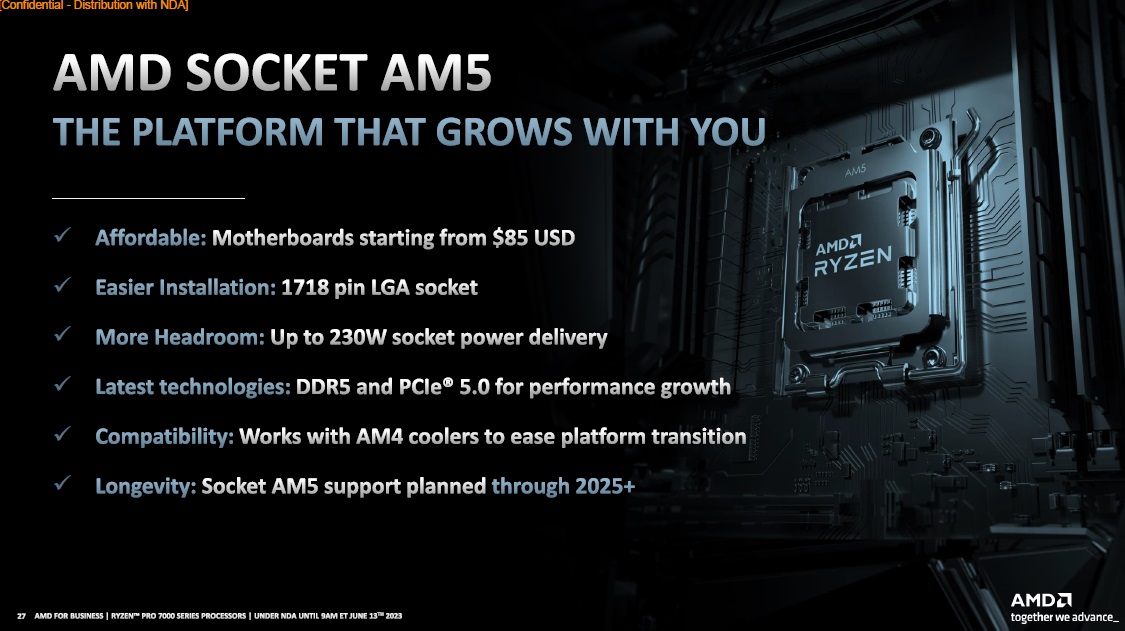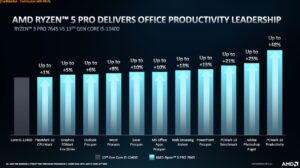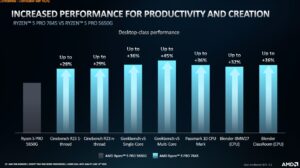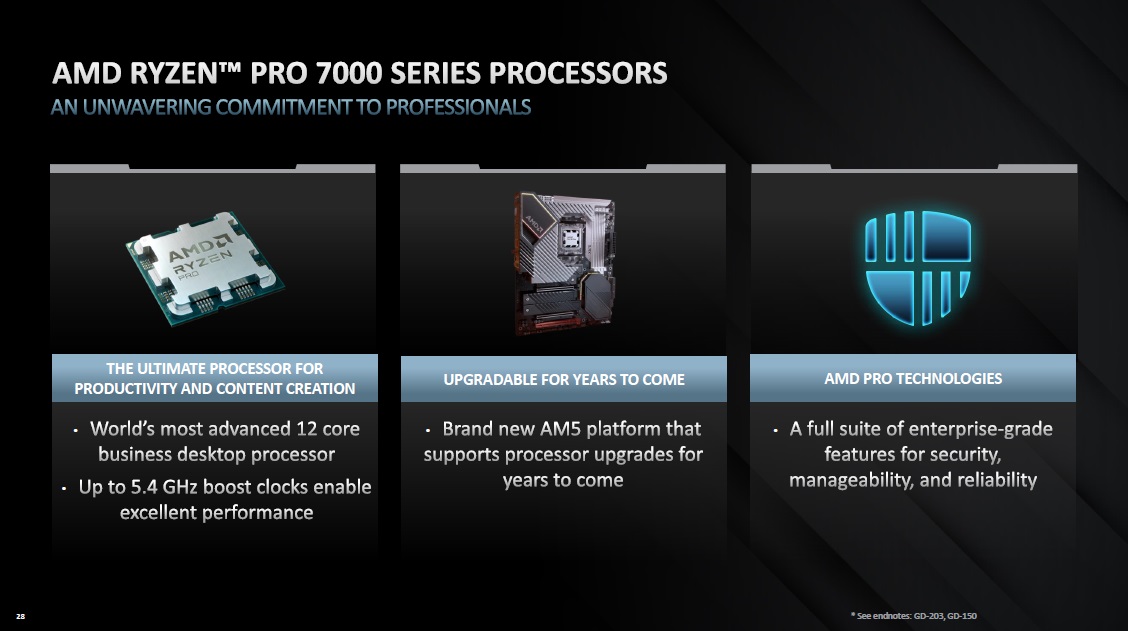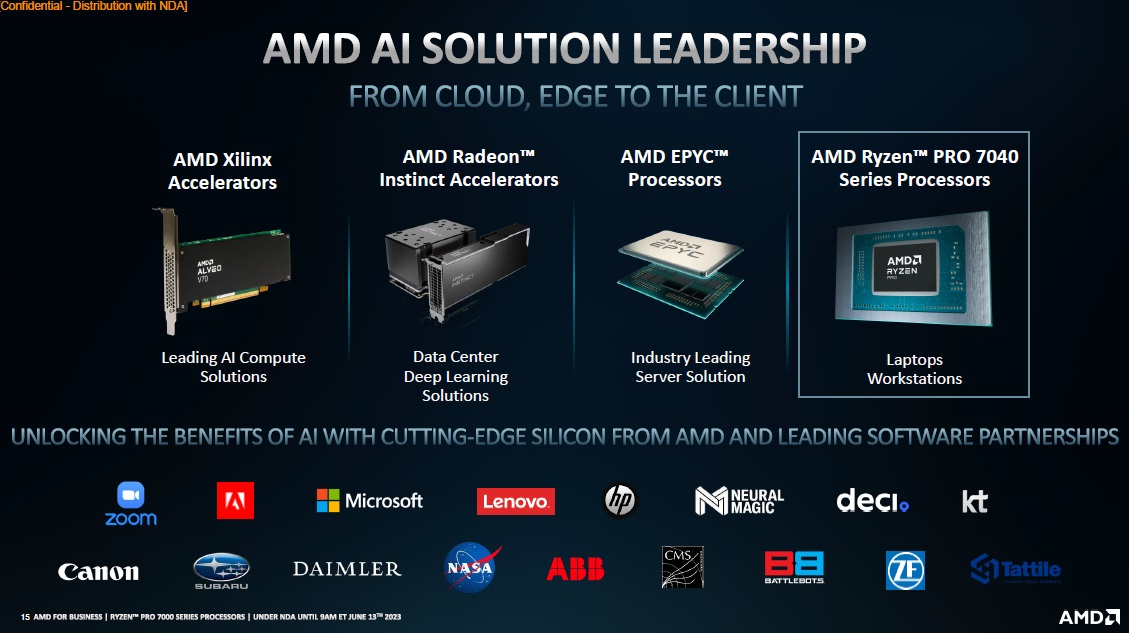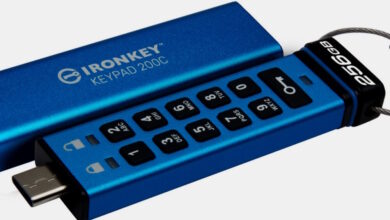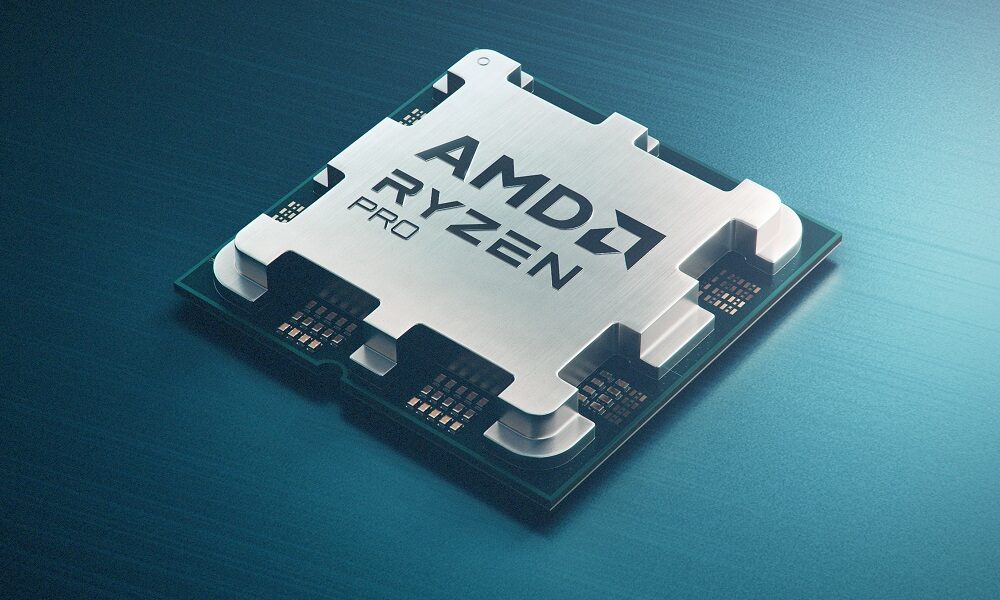
AMD has presented the new Ryzen Pro 7000 processors at a special event held in San Francisco, an important commitment to the professional sector that combines the best of Zen 4 with a number of exclusive features to improve its integration and its possibilities of use in said sector. We have many things to tell you, so make yourself comfortable.
First of all we must be clear that there is two different versionsthe Ryzen Pro 7000 Mobile, aimed at laptops and compact and low-power computers, and the Ryzen Pro 7000 for desktop, which are designed to integrate into larger computers that have greater thermal and power headroom.
Ryzen Pro 7000 Mobile
This new generation of processors maintains all the benefits of the Zen 4 architecture, which means that they have a top-of-the-range IPC, and are manufactured in the new 4nm node, which is a clear improvement over desktop models, which use the 5nm node. They maintain the integrated RDNA3 GPU, and have a specialized AI neural processing engine embedded in the CPU.
As we can see in the attached image, AMD has announced a total of six different models grouped into two series. The HS series is characterized by prioritizing performance and has higher TDP values, since it moves between 35 and 54 watts. On the contrary, the u-series It has a much lower consumption, and is designed for ultralight equipment. His TDP is between 15 and 28 watts. Both series use a design of monolithic core.
In both series we can find processors configured with 6 cores and 12 threads and with a maximum of 8 cores and 16 threads. Have 1 MB L2 cache per core, which is a significant increase from Zen 3’s 512 KB L2 cache per core, and 16 MB L3 cache. The models with 8 cores and 16 threads have a total of 24 MB of cache (L2 + L3).
AMD has highlighted that this new generation offers great performance on all fronts, and that it is capable of maintaining high efficiency and long autonomy. The Sunnyvale company has shared a large amount of performance data at both the CPU and GPU level, and also autonomy test results, and as you can see in the attached gallery the Ryzen 7000 Pro they come out very well.
The Ryzen 7 Pro 7840U is capable of beat the Intel Core i7-1370P by 17% at the CPU level (average of three tests), performs up to 12% more in Microsoft Office with Teams active and consumes up to 15% less in that scenario (also compared to an Intel Core i7-1370P). In autonomy, the AMD chip recorded a maximum of 6 hours and 48 minutes of use on a computer with a 51.3 WH battery, while the Core i7-1365U only made it to 4 hours and 18 minutes with a laptop configured with a 54 Wh battery.
In graphics performance the jump to the RDNA3 architecture It has been so noticeable that the integrated GPU that the Ryzen 7 Pro 7840U brings is capable of surpassing the NVIDIA RTXA500an Ampere-based, low-power integrated professional GPU, paired with an Intel Core i7-1370P processor.
Thanks to the AI engine that integrates the Ryzen Pro 7000 Mobile we can enjoy advanced features in Windows when making video calls, like improved background blur, real-time tracking AF, and gaze correction so you’re always looking at your subject. We will also be able to access future functions and new improvements.
Last but not least, the Ryzen Pro 7000 Mobile also has advanced security and management features that make a significant difference, among which we can highlight Secured-Core PC, AMD Memory Guard, Microsoft Pluton, AMD Secure Processor and AD Shadow Stack. To all this we must add the security functions that OEMs add, such as Wolf Security from HP.
Ryzen Pro 7000 desktop
This new generation of processors is configured with up to 12 cores and 24 threads, and adopts a chiplet-like design, which means that the model with 12 cores and 24 threads has two CCD units with 8 cores each, of which six cores are active to add up to those twelve cores. The 8-core and 6-core models only have a CCD unit, but all models have an I/O chip where the GPU and I/O subsystem are integrated.
As we can see in the attached image, AMD will launch a total of three different models with configurations of 6 cores and 12 threads, 8 cores and 16 threads, and 12 cores and 24 threads. The chiplet-type design has allowed the Sunnyvale company offer a much larger L3 cache, which amounts to 64 MB on the 12-core/24-thread model and 32 MB on the other two models. The 1 MB L2 cache setting per core is maintained.
The desktop Ryzen Pro 7000s are made in the TSMC 5nm node at CPU level, and use the 6 nm node in the I/O chiplet. They are compatible with DDR5 memory and the PCIe Gen5 standard, and come with a Wraith Spire fan. It is not an ideal solution, so it will be advisable to buy something more powerful so that the working temperatures remain at fully optimal levels.
In the attached image we can also see performance data that compares the Ryzen 5 Pro 7645 with the previous generation, and also with the Intel Core i5-13400, and it is clear that the differences are very marked. The generation gap is important, and we also see a substantial difference compared to the competition. Remember that the Core i5-13400 has 6 high-performance cores, 4 high-efficiency cores and 16 threads, while the Ryzen 5 Pro 7645 it has 6 cores and 12 threads.
Finally, AMD has highlighted that the new Ryzen Pro 7000 for desktops are integrated into the AM5 platform, and that this is not only up-to-date, but it is also very economical and will have a long useful life (it will receive support until 2026). These processors also have the AMD Pro enterprise-grade security and management technologies.
For the deployment of these new processors, AMD will have the support of very important partners within the technology sectoramong which we can mention such relevant names as Microsoft, Lenovo and HP.

